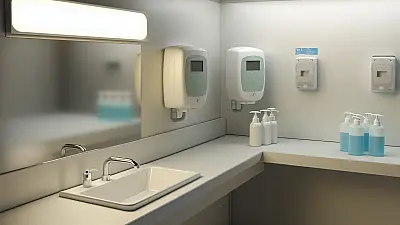EL MONTE, CA - A complaint inspection at Ramona Nursing and Rehabilitation Center revealed that nursing staff failed to follow proper protocols when a diabetic resident's foot swelling worsened, ultimately resulting in open wounds on the resident's toes that could have been prevented with timely medical intervention.

Critical Failure in Change of Condition Protocols
The February 5, 2025 inspection found that Licensed Vocational Nurse 3 (LVN 3) observed increased swelling in Resident 8's left foot on January 15, 2025, but failed to complete required documentation or notify the resident's physician as mandated by facility policy. This delay in reporting had serious consequences for the 66-year-old resident, who has type 2 diabetes with diabetic neuropathy and chronic kidney disease.
LVN 3 acknowledged the oversight during the inspection, stating that swelling "was an indication of a circulation problem that could lead to complications like ulcers and wounds to the legs, feet, and toes." The nurse admitted to only conducting visual monitoring rather than following the facility's formal change of condition procedures.
By January 17, 2025 - just two days after the initial observation - Resident 8 had developed open wounds on the second and third toes of the left foot. The great toe showed swelling with purple discoloration and partial opening. At the time of inspection, the resident's left foot displayed severe pitting edema, with the second and third toes appearing black and purple.
Medical Significance of Delayed Intervention
For residents with diabetes and chronic kidney disease, foot swelling represents a critical warning sign that requires immediate medical evaluation. Diabetic neuropathy reduces sensation in the feet, making residents unable to feel developing problems. Combined with poor circulation, this creates a perfect storm for rapid tissue deterioration.
When circulation is compromised, even minor swelling can quickly progress to tissue death and open wounds. The combination of diabetes and kidney disease makes residents particularly vulnerable to these complications, as both conditions affect blood flow and the body's ability to heal.
Prompt physician notification allows for interventions such as medication adjustments, compression therapy, elevation protocols, or vascular assessment. The nursing supervisor confirmed during the inspection that "had Resident 8's physician been informed on 1/15/2025 that Resident 8 had an increase in swelling to the left feet and legs, it was possible Resident 8's toe wounds may not have developed and/or opened."
Breakdown in 72-Hour Monitoring System
The facility's own policy requires nurses to monitor residents for 72 hours after identifying a change of condition and follow up with physicians if conditions fail to improve or worsen. This protocol serves as a critical safety net for vulnerable residents.
LVN 3 observed that the toe wounds had not improved and had actually worsened by January 20, 2025. At this point, facility policy required completing another change of condition form due to the deteriorating situation. However, this second notification opportunity was also missed.
During the inspection, LVN 3 stated that "if Resident 8's physician had been notified and a COC form had been created then it was possible Resident 8's toe wounds may not have ruptured and opened because LVN 3 could have gotten a physician order to monitor and treat the swelling, with all staff monitoring."
The Director of Nursing confirmed that vascular complications can progress rapidly, explaining that "edema/swelling was a sign of circulation issues that could lead to wounds in the feet or toes" and that physician evaluation was necessary "to ensure nothing else cardiovascularly was going with the resident."
Industry Standards and Best Practices
Nursing home regulations require facilities to ensure residents receive appropriate treatment according to physician orders and established care protocols. Change of condition reporting represents a fundamental patient safety practice designed to prevent medical emergencies and complications.
The facility's policy, revised in February 2025, clearly outlines requirements for licensed nurses to assess residents, document findings, and communicate with physicians using standardized tools when conditions change. The policy specifically mentions monitoring for "change in ability or decline in physical function" and "any signs or symptoms of infections."
For diabetic residents with existing circulation problems, foot monitoring becomes even more critical. Standard practice includes daily foot inspections, prompt reporting of changes, and immediate physician consultation for any signs of compromised circulation or tissue damage.
Additional Issues Identified
The inspection also revealed gaps in care plan implementation. While Resident 8 had care plans addressing leg ulcers and skin integrity issues, the nursing staff failed to properly execute the monitoring and reporting components. The care plans included interventions to "monitor/document/report to MD as needed for signs and symptoms of infection" and "document progress in wound healing," but these protocols were not followed when the resident's condition deteriorated.
The facility demonstrated awareness of proper procedures through its written policies but failed in execution, highlighting potential training or supervision gaps in clinical practice.
This violation was classified as causing minimal harm with potential for actual harm, affecting few residents. However, the case illustrates how procedural failures can have significant consequences for vulnerable residents with complex medical conditions requiring vigilant monitoring and prompt intervention.
Full Inspection Report
The details above represent a summary of key findings. View the complete inspection report for Ramona Nursing and Rehabilitation Center from 2025-02-05 including all violations, facility responses, and corrective action plans.
💬 Join the Discussion
Comments are moderated. Please keep discussions respectful and relevant to nursing home care quality.